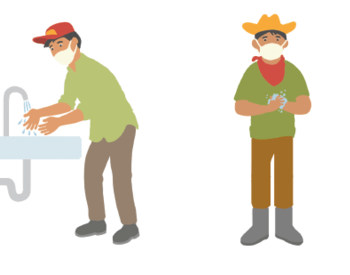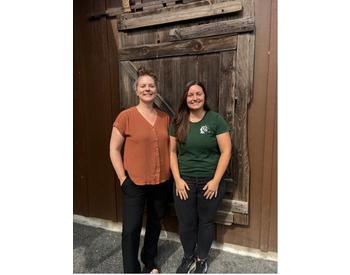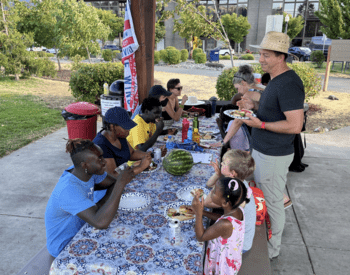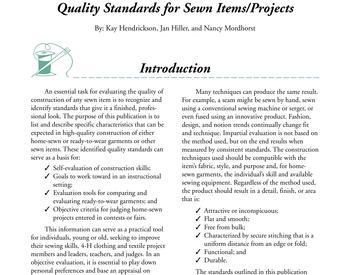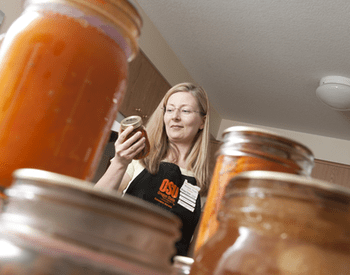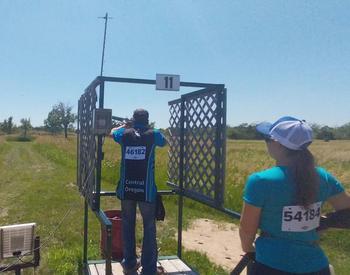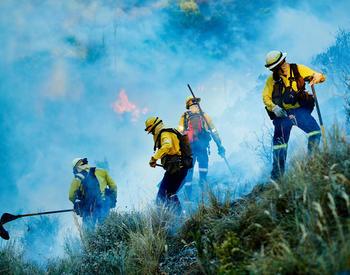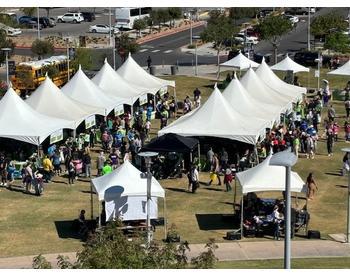High Speed Hand Washing saves, time, water and energy, and can help prevent the spread of disease. It can be adapted for all age groups. Use it throughout the day, especially after breaks or recess and before food is served. This lesson can be used before any nutrition education curriculum to model and practice proper hand washing throughout the series. With practice, groups of 5 to 25 can wash their hands in 5 minutes or less. Length of lesson: 30 minutes.
Objectives
Participants will:
- Understand when and why hands need washing.
- Gain skills to lather hands longer, minimize water use and complete the task as a group in less than 5 minutes.
Supplies
Hand soap in pump dispenser, towel to dry floor if it gets wet. High Speed Hand Washing posters. Optional: GloGerm-type kit with black light, special lotion. Timer.
Handouts (optional)
- We Wish You Well: Keep Foods Safe
- Stop Germs: Wash your Hands (English) EC1551
- Stop Germs: Wash your Hands (Spanish) EC1551S
- Stop Germs: Wash your Hands (Russian) EC1551R
Before you begin
Make sure there is a place for participants to wash their hands that has [hot] water, soap that children can reach and paper towels. Some classrooms have sinks. A nearby lavatory may be needed. Outdoors, a portable hand washing station may be needed. This technique does not require multiple sinks. With younger groups, another adult can help direct individuals through the steps quickly and keep the focus on building the lather while waiting to rinse hands.
To prevent the risk of spreading COVID-19, ask participants to bring face coverings or provide them. Provide visual cues to physically distance 6 feet from others with tape on floors, or flagging outdoors, chairs spaced and signage. Give verbal reminders throughout each step.
Opening (5 minutes)
Germs are everywhere. Some germs are good for you, but some are not and they can make you sick. If you have had a cold, the flu or food poisoning, it was caused by harmful germs. There are some things you can do to help keep yourself and your family and friends safe from harmful germs.
- Cough into your shoulder or elbow, not your hands. (Demonstrate and have participants practice.)
- Don’t share your drinks, gum or food with your family or friends.
- Don’t double dip when tasting or eating food that is also served to others. (Mime tasting incorrectly “use a clean spoon for each taste, not your finger.”)
- Wash your hands:
- Before you prepare or eat food.
- After you go to the bathroom or take out garbage.
- After you touch hair (mime), face (mime ears, nose, mouth, eyes) or body/clothes (mime pulling up sleeves, hands in pockets); and when preparing or serving food.
- After handling foods that will be cooked before eating (ask for examples —eggs, raw meats).
- After sneezing or coughing.
Activity 1: Proper hand washing demonstration (1-2 minutes)
Lead this “dry” activity while participants follow directions with you.
First, let’s review how to wash hands, properly.
- Pretend to wet hands and shake off excess.
- Pretend to add 1 pump of soap from the dispenser.
- Rub and scrub palms together until (imaginary) lather begins to form. The lather will lift the dirt, grease and germs from the hands.
- Spread fingers and rub between them.
- Rub backs of hands and fingers alternately with palms of hands.
- Wrap thumb and fingers around thumb and twist for each hand.
- Wrap thumb and fingers around wrist and twist for each wrist.
- Put fingertips together in palm of other hand and scrub in a circular motion. Change directions.
- Use thumbnail to clean under each fingernail on the opposite hand.
- Rinse and rub hands under running water to remove lather.
Note: If available, use a fingernail brush in step 9. Fingernail brushes should be cleaned and sanitized daily. This can be done by hand or in a dishwasher.
Activity 2: High Speed Hand Washing (15 minutes)
Washing hands properly takes about a minute. Having the whole group wash their hands one at a time can take a long time, but there is a trick we can use to wash all our hands in 5 minutes or less!
Show the poster to review the steps:
- Wet and shake water off hands (over the sink).
- Squirt with soap (young children will need help to do this and move quickly to the next step).
- Immediately turn and walk to the end of the line.
- Lather up by rubbing and scrubbing your hands. Lather lifts the dirt and germs off of your hands.
- Back at the sink, rinse the bubbles and germs down the drain
- Step aside to towel-dry your hands.
The leader divides the group into smaller teams of 5 to 10 people. Start the timer. Send the first group to the sink. It works well to have the leader coaching during the process. This chant — “Wet, shake, soap, end-of-the-line” — helps them focus. Encourage them to really rub for some great lather. Good lather is also a measurement of hand washing quality. When one group is nearly finished, the next group comes to the line to begin the process.
Closing (3 minutes)
Stop timer and record time. Congratulate the participants on their successful hand washing. Encourage them to practice proper hand washing the coming week at school or work and at home. Noting their time, challenge the group to practice High Speed Hand Washing and finish in 5 minutes or less. If providing a handout, show it and encourage participants to take it home to share with their family. (The teacher may have a distribution system.)
Optional method
If using the black light experiment to help participants self-assess their technique follow these steps: After the opening, do not provide any hand washing instruction. Have you ever wondered how well you wash you hands? Show participants the special lotion. We are going to pretend that the lotion carries the germs that are on your hands. It does not really have harmful germs in it. You can look at the lotion under the black light so you can see where germs might hide. This special lotion will glow in the black light and show you how well you wash your hands. You should see a chalky, lavender color. Now, wash your hands just as you would normally and come back to the black light to see where you missed. Then, resume the activities in the lesson.
Notes
To make grade-level adaptations for younger audiences use children’s literature with food safety themes, such as "Germs are Not for Sharing" by Elizabeth Verdick or "Those Mean, Nasty, Downright Disgusting But…Invisible Germs" by Judith Anne Rice.
After they have learned the technique, younger children may enjoy singing the ABC Song or Happy Birthday (twice) while lathering in line. Generally, socializing time while lathering can help build resiliency and reduce stress.
In classrooms, teachers may appreciate activities arranged for teams that are waiting their turn to wash hands that will promote academic enrichment or a physical activity like dancing.
For tweens, teens and adults, food safety skits or games can be used in the opening. This option is best when participants have learned the technique in prior years, and just need a food safety review to remind them why hand washing is important. Then practice to update their systems.
See our High Speed Hand Washing resources collection for suggestions and other resources.
